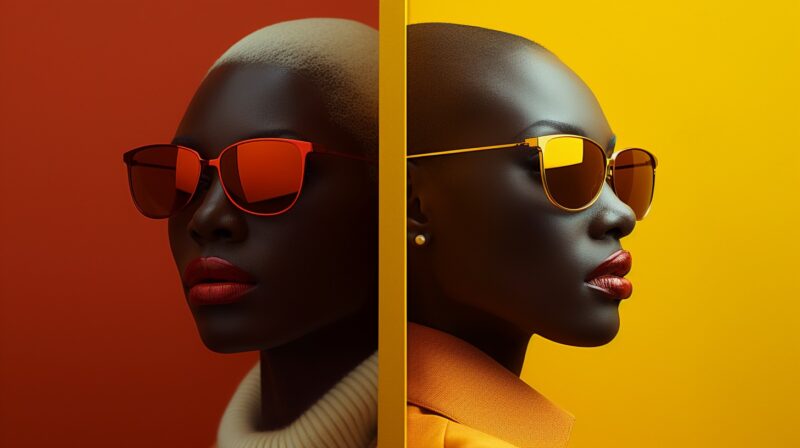When we gaze upon the world around us, the richness of depth and dimension is something many take for granted. Yet, for some, this depth is a hidden layer, elusive and intangible of stereo blind. This phenomenon, known as stereo blindness, affects how one perceives their environment, and it raises intriguing questions about the brain’s intricate processing of visual information.
What is Stereo Blindness?
Stereo blindness, or stereopsis, is a condition where the brain does not fully process the binocular vision required for depth perception. This means that the usual vivid three-dimensional view of the world is flattened, affecting one’s ability to judge distances accurately.
The Mechanics of Binocular Vision
Our ability to perceive depth comes from the slight differences in the images seen by each eye, known as binocular disparity. The brain fuses these two images into one, creating a 3D perception. For individuals with stereo blindness, the brain’s fusion process is disrupted, leading to a two-dimensional view.
This can occur due to a variety of reasons, from the misalignment of the eyes, known as strabismus, to the lack of development of binocular cells in the visual cortex.
Identifying Stereo Blindness
Identifying stereo blindness often happens accidentally, as those affected may not realize their perception of depth is any different. Common signs include difficulty with tasks requiring depth judgment, such as catching a ball, driving, or simply pouring a drink. Some may also struggle with 3D movies and images that require the merging of two slightly different pictures to create a sense of depth.
Impact on Daily Life
Living with stereo blindness can range from a minor inconvenience to a significant daily challenge. While many adapt to their unique visual experience, certain activities can pose more of a struggle. It’s not just about missing out on the 3D effect in movies; it can affect coordination, sports performance, and spatial understanding.
The Science Behind Stereo Blindness

The intricacies of stereo blindness are rooted in both the anatomy of the eyes and the complex pathways of the brain. Understanding this condition requires a closer look at the visual system and the factors that can disrupt its normal function.
The Role of the Eyes and Brain
The journey of visual information begins when light enters the eyes, creating images on the retinas. These images are then transmitted to the brain via the optic nerves. In the brain, particularly within the visual cortex, this information is processed and combined to give us our perception of depth. When any part of this pathway is compromised, stereo blindness can result.
Genetic and Environmental Factors
Research suggests that both genetic and environmental factors can play a role in the development of stereo blindness. For some, the condition is present from birth due to congenital issues. For others, it can develop later in life through conditions such as amblyopia (lazy eye) or can be the result of an injury or illness that affects the eyes or brain.
Advances in Treatment and Understanding
The field of vision science has made significant strides in both the treatment and understanding of stereo blindness. Therapies such as vision therapy, corrective lenses, and, in some cases, surgery can improve or even restore depth perception for some individuals. Moreover, ongoing research continues to shed light on how the brain can adapt and compensate for visual impairments.
Strategies for a Two-Dimensional World

Over the years, I’ve honed various strategies to navigate a world designed for three-dimensional perception. These techniques have become second nature, allowing me to function effectively despite my stereo blindness.
Visual Cues and Techniques
I’ve learned to rely on alternative visual cues to judge distance and depth:
- Shadows and Lighting: By observing how shadows fall and how light plays on objects, I can infer depth.
- Size and Overlap: Objects that are larger or overlap with others tend to be closer.
- Motion Parallax: Objects moving faster appear closer than those moving slowly in the background.
Additionally, for those seeking to enhance their perception of depth, exploring methods to refine this skill can be beneficial.
Daily Adaptations
In daily life, these adaptations manifest in various ways:
- Driving: I am extra cautious and maintain a safe distance, as I cannot rely on depth cues to judge the speed and distance of other vehicles.
- Sports: I prefer sports that don’t require precise depth perception, like running or swimming.
- Social Interactions: I am mindful of physical interactions, like handshakes or hugs, to avoid misjudging distances.
Supportive Tools and Technology
There are also tools and technologies that can assist those with stereo blindness:
- Assistive Devices: Special glasses and apps can help with depth cues.
- Augmented Reality: AR technology can enhance depth perception by overlaying additional information onto the real world.
- Environmental Modifications: Organizing spaces with clear markers and good lighting can reduce the challenges of depth perception..
Frequently Asked Questions
Can stereo blindness be diagnosed in children?
Yes, children can be diagnosed with stereo blindness. Early detection through vision screenings is crucial, as some underlying conditions like amblyopia (lazy eye) can be treated more effectively when addressed early in life.
Is stereo blindness more common in men or women?
Stereo blindness does not have a strong gender bias; however, certain underlying conditions that can lead to stereo blindness, such as color blindness, are more prevalent in men.
Can people with stereo blindness drive?
Many people with stereo blindness are able to drive safely. They often rely on other visual cues and are typically more cautious on the road. However, the severity of the condition can vary, and some may find it more challenging than others.
Are there any sports that are easier for people with stereo blindness to play?
Sports that rely less on depth perception, such as running, swimming, or cycling, may be more accessible for those with stereo blindness. Team sports requiring quick depth judgments, like basketball or soccer, might be more challenging.
Does stereo blindness affect reading and writing?
Stereo blindness generally does not affect reading and writing as these activities do not typically require depth perception.
Can virtual reality (VR) technology help people with stereo blindness?
VR technology is an area of interest for vision therapy. It has the potential to provide controlled environments where individuals can practice and develop visual skills, but its effectiveness for stereo blindness specifically requires more research.
Are there any famous individuals known to have stereo blindness?
Yes, there are several notable individuals with stereo blindness, including the artist Rembrandt and the neurologist Oliver Sacks. Their achievements illustrate that one can excel in their field despite, or perhaps because of, this unique way of seeing.
Final Words
Embracing the flatlands of my visual journey has not only been about adaptation but also about appreciation. The world through my eyes is different, not deficient, and every challenge is an avenue for growth and innovation.
